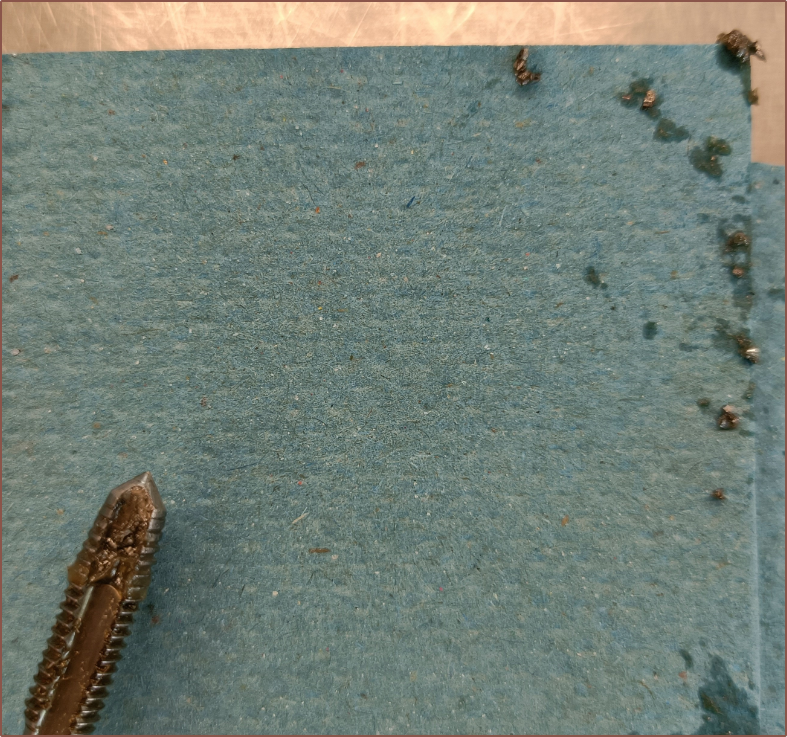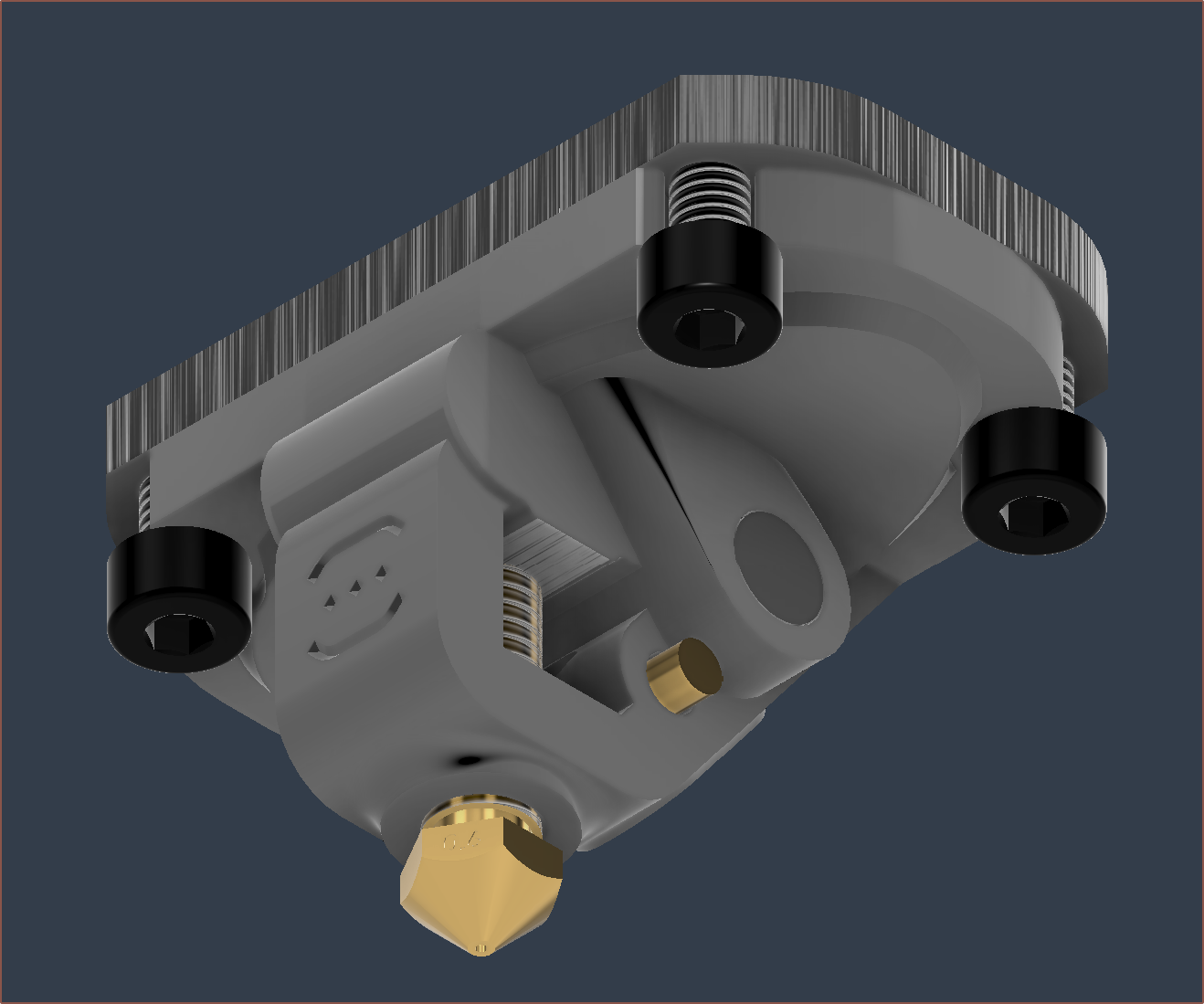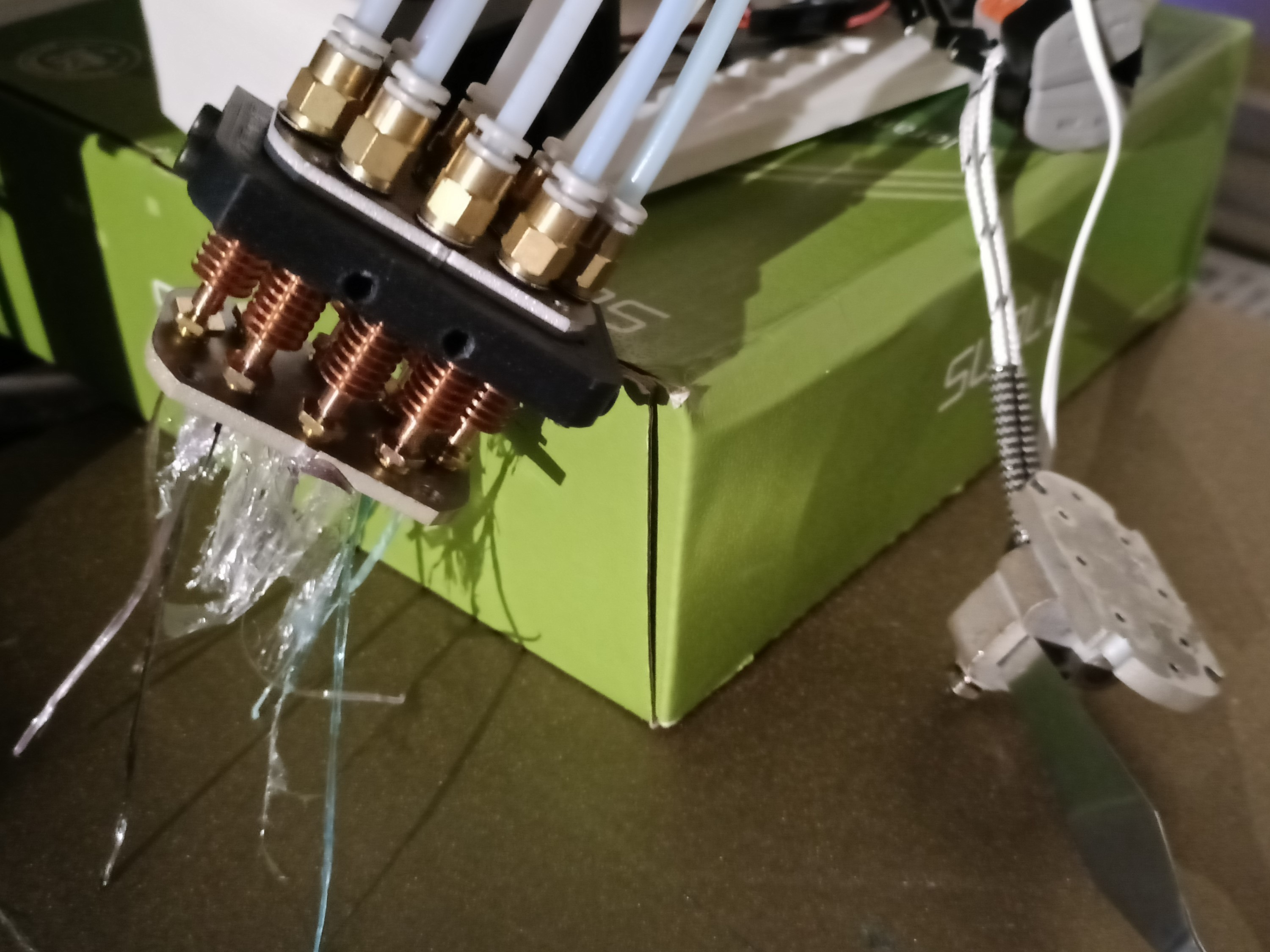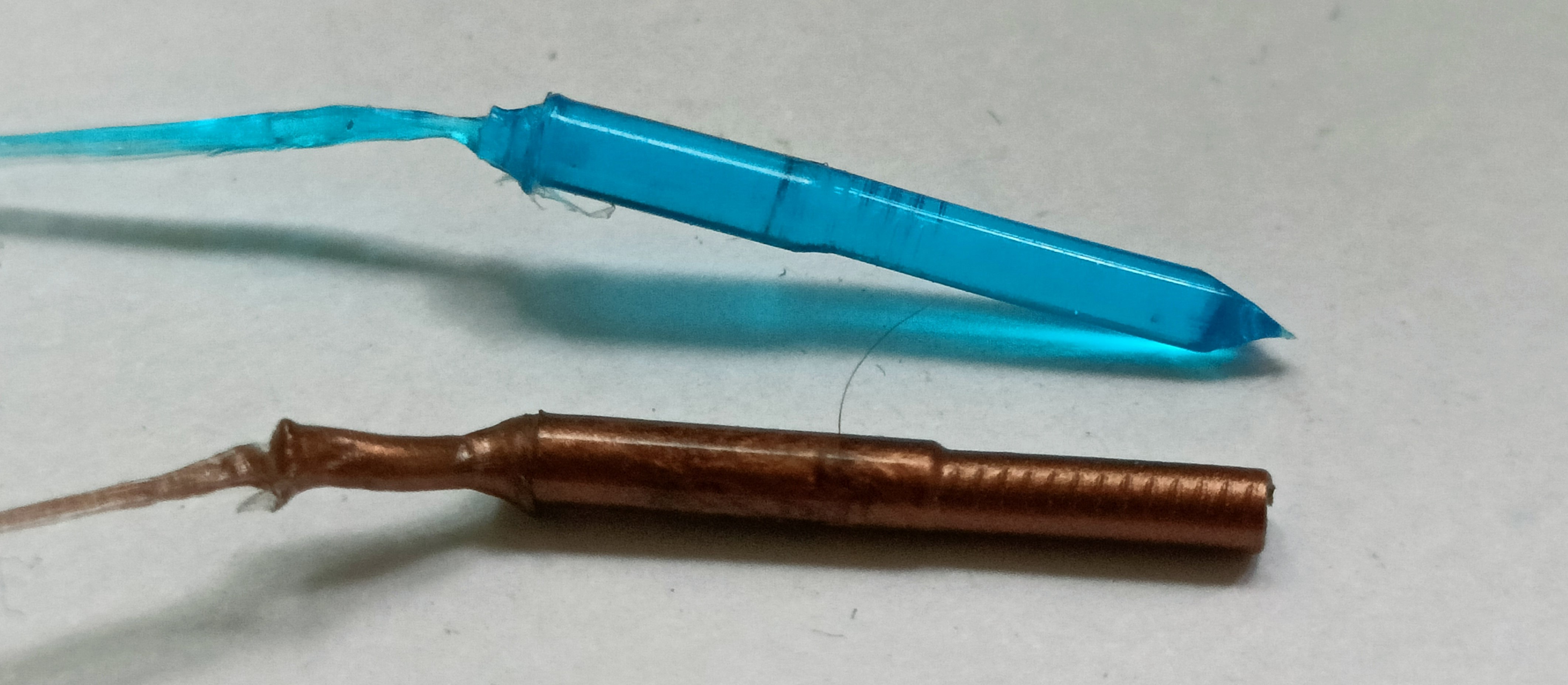
Somewhat unfortunately, a shaving got squashed into the aluminium template plate and I never noticed until well after I finished tapping.
![]() Tapping
Tapping
 The technician said that I'd be able to feel when I need to back up the tap and they were right. There's noticeably more force to tap, and I could feel when the chips were adding more friction. I didn't know how long the aluminium threads would last so I only did 4 holes per thread.
The technician said that I'd be able to feel when I need to back up the tap and they were right. There's noticeably more force to tap, and I could feel when the chips were adding more friction. I didn't know how long the aluminium threads would last so I only did 4 holes per thread.
I'm not sure if it's because I'm tapping through steel or because of the grease, but tapping produced salt-like grains of steel:
 I also used an M6 bolt to ensure quality and retap holes that needed it.
I also used an M6 bolt to ensure quality and retap holes that needed it. Testing before install
When I tried a spare heatbreak with this steel clamp plate on Coaxial8or R1, there was no bending whatsoever! It also highlighted that I could use 4mm thick steel, which I predict would be more reliable for the following reasons:
- Potentially easier to tap perpendicular to the face
- longevity of the heatbreak threads
- Stiffer plate, further increasing the sealing force exerted on the input face.
Thus, I updated R3. I also changed the design of the cartridges, mainly because the thermistor doesn't go all the way though R2 and the difference between the 11mm main body is minimal.

Installation
I had the idea that I could leave the filaments inside and use them to help unblock the heatbreaks after separation. It totally works.

The filaments expand slightly, meaning that it was very difficult to pull them out of the heatbreakes. Instead, using the extruder or pliers to push the filaments out was very effective.

Actually screwing in the new heatbreaks was straightforward. Putting them back on the bowden couplers was not. I tried to use the filaments to guide the assembly, but it didn't work. Thus I fell back to the traditional way of assembly.
I found out that putting a square-sized cut of fabric tape on the bowden tubes greatly increased the amount of grip I have on them, making it much easier to disconnect them.

Unfortunately, I also discovered that it's barely an inconvenience to insert the heatsinks into the coupler plate when the hotend holder is not installed. When the hotend holder is installed, it is of great difficulty to install. Hence, the hotend holder is in the way and is in dire need of being redesigned.
 kelvinA
kelvinA Tapping
Tapping
Discussions
Become a Hackaday.io Member
Create an account to leave a comment. Already have an account? Log In.